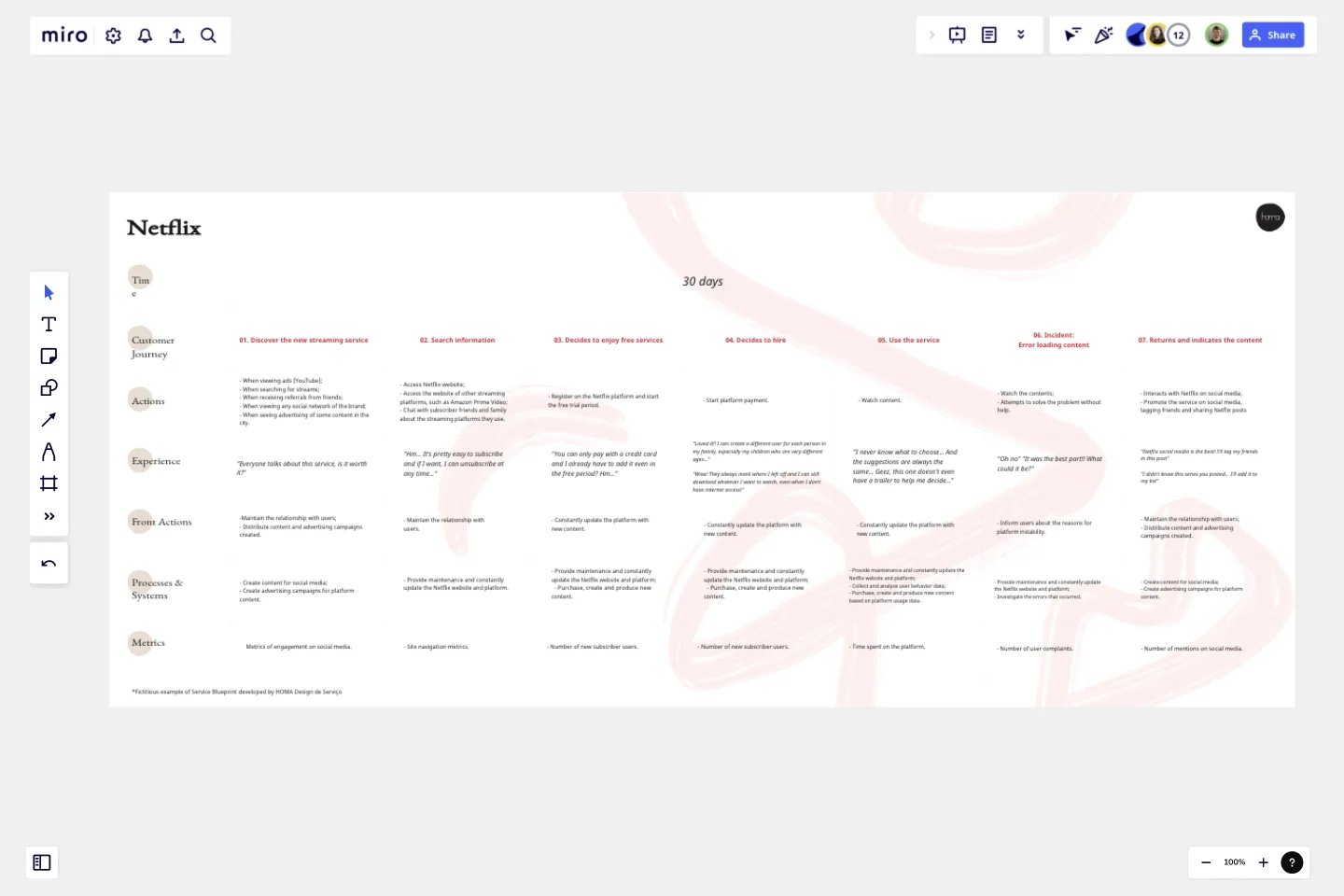Service Blueprint by Bruna Plentz
Service Blueprint template created by HOMA Service Design Consultancy for innovation and management of customer experience.
The service blueprint is widely used to highlight the reality of companies, to identify opportunities for innovation and service improvements. This tool is quite interesting to explore all the steps of creating and managing a service. With it, it is possible to visualize all the phases of the customer journey, their actions and reactions, in addition to what happens in internal processes.
To use this template, follow these steps:
Assemble your team to fill it out collaboratively. Don't forget to invite people who have direct contact with your customer, they are an excellent source of knowledge!
Map the moments of the customer journey... Include everything from the moments when customers are just considering your service to the post-service phase, that is, the relationship stage;
Then fill in the actions, experiences, and processes that your team knows about;
For the blueprint to be more reliable, conduct qualitative research to understand in more depth the behaviour of customers;5. Finally, fill in the metrics for your company to track the customer experience at every moment of the journey.
This template was created by Bruna Plentz.
Get started with this template right now.
Analytics Storyboard
Works best for:
Planning, Storyboard, Design
Visualize your data insights with the Analytics Storyboard template. This tool is perfect for data analysts and business intelligence teams, helping you present complex data in a clear and engaging narrative format. It includes sections for data sources, key findings, and visualizations, ensuring your audience can easily understand and act on your insights. Use this template to create compelling data stories that drive informed decision-making and strategic planning.
Empathy Map Trevotech
Works best for:
Market Research, Research & Design
Empathy Map Trevotech is a powerful tool for gaining insights into user experiences. It helps you capture and analyze user emotions, thoughts, and behaviors, ensuring your product designs meet user needs effectively.
User Journey Mapping Template
Works best for:
Design
Each person's life is a unique journey filled with daily decisions and challenges. The User Journey Mapping Template is a useful tool to visually represent these individual experiences. It simplifies understanding and documenting the current state of a situation by breaking down its different parts.
Empathy Map Trevotech
Works best for:
Market Research, Research & Design
Empathy Map Trevotech is a powerful tool for gaining insights into user experiences. It helps you capture and analyze user emotions, thoughts, and behaviors, ensuring your product designs meet user needs effectively.
Empathy Map Canvas by Sampriti Jain
Works best for:
Market Research, Strategy & Planning
The Empathy Map Canvas template allows you to explore user behaviors and emotions comprehensively. It’s designed to help you visualize user experiences and create solutions that truly meet their needs. Perfect for UX teams and product developers.
Empathy Map by Invoke
Works best for:
Market Research, Research & Design
The Empathy Map template is perfect for understanding user behavior and motivations. It helps teams capture insights into what users think, feel, and do, ensuring your designs meet their needs. Ideal for UX and product teams.

